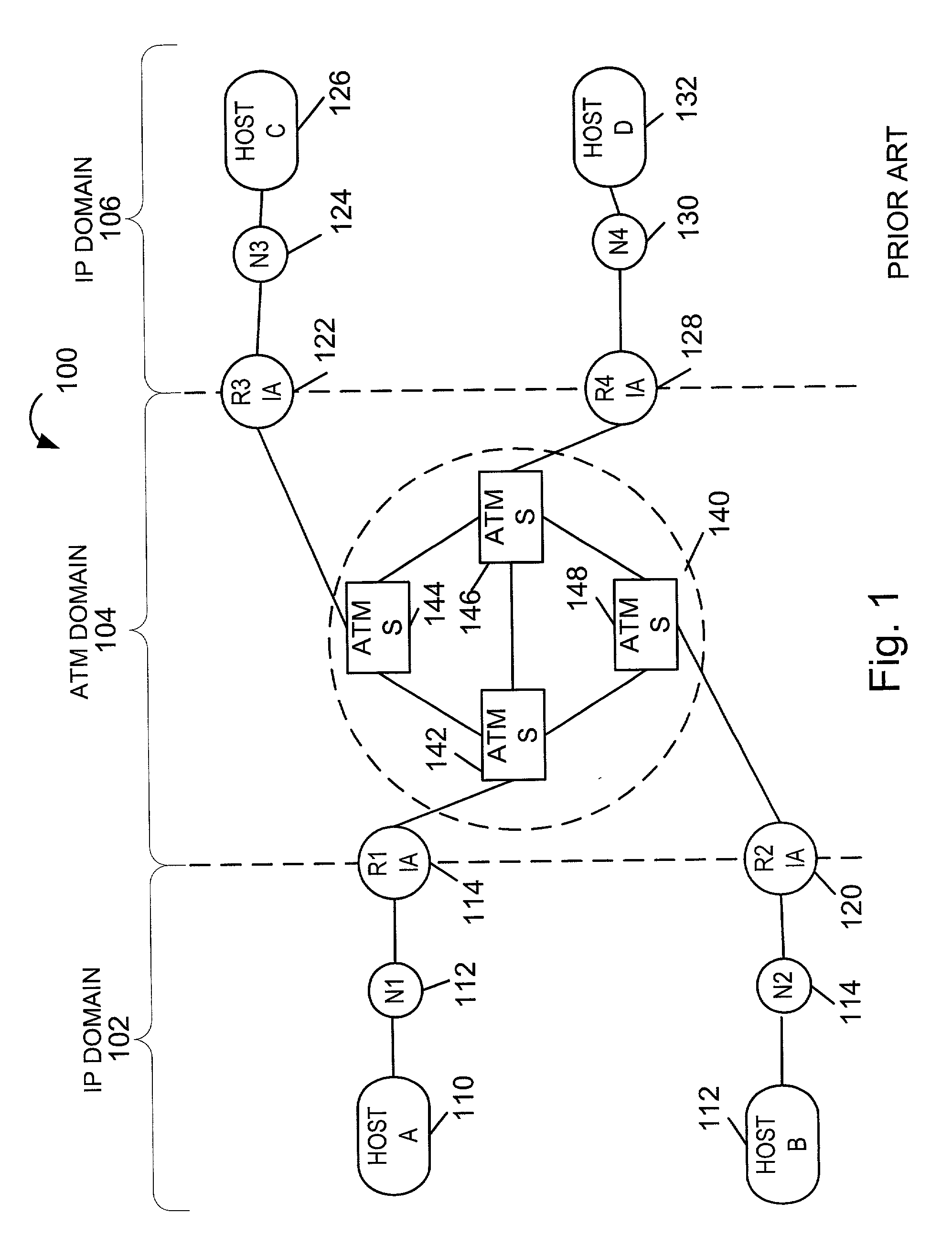Methods and apparatus for implementing bi-directional signal interfaces using label switch paths
a label switch path and signal interface technology, applied in the field of communication systems, can solve the problems of inability to run such protocols over an mpls network, bandwidth waste, and inability to keep up with the latest increase in bandwidth
- Summary
- Abstract
- Description
- Claims
- Application Information
AI Technical Summary
Benefits of technology
Problems solved by technology
Method used
Image
Examples
Embodiment Construction
[0035]As discussed above, the present invention is directed to methods and apparatus for implementing bi-directional signal interfaces, e.g., logical signal interfaces (LSIs) in communications systems which use uni-directional label switched paths, (LSPs), e.g., MPLS networks.
[0036]In accordance with one feature of the present invention, two uni-directional LSPs, e.g., a transmit and a receive LSP, are bound together based on configuration information loaded into a network node, e.g., an MPLS router or switch. Each bound pair of uni-directional LSPs serves as a bi-directional LSI that can be used in a manner that is the same as, or similar to, the manner in which a PVC is used in an ATM network. Hereinafter, LSI will be used to refer to a pair of uni-directional LSPs which have been configured to serve as a bi-directional signal path.
[0037]FIG. 2 illustrates an exemplary label switching router (LSR) 200 which can be used to support LSIs in accordance wit the present invention. The L...
PUM
 Login to View More
Login to View More Abstract
Description
Claims
Application Information
 Login to View More
Login to View More - R&D
- Intellectual Property
- Life Sciences
- Materials
- Tech Scout
- Unparalleled Data Quality
- Higher Quality Content
- 60% Fewer Hallucinations
Browse by: Latest US Patents, China's latest patents, Technical Efficacy Thesaurus, Application Domain, Technology Topic, Popular Technical Reports.
© 2025 PatSnap. All rights reserved.Legal|Privacy policy|Modern Slavery Act Transparency Statement|Sitemap|About US| Contact US: help@patsnap.com



